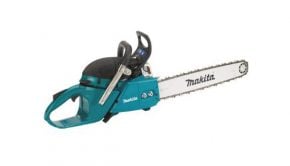How 2-Stroke Engines Work
What is a 2-Stroke Engine?
The primary difference between 2-stroke and 4-stroke engines is that 4-stroke engines have four cycles for moving burned/unburned mixtures rather than only two. 2-stroke engines are typically very simple and light weight. Because of this, they are commonly used instead of 4-stroke engines in handheld power equipment. 2-stroke engines have very few working parts and require very little maintenance because of this. They are much cheaper to manufacture than 4-stroke engines. They do not have valves or specified lubrication systems.
Main Components:
- Piston
- Spark Plug
- Combustion Chamber
- Crankshaft
- Connecting Rod
- Intake Valve
- Exhaust Valve
- Cylinder Head
How it Works:
- A precise mixture of fuel and air is created in the carburetor
- The fuel and air mixture is brought into the main cylinder and compressed (compression stroke)
- The spark plug fires at maximum compression which causes an explosion that drives the piston downwards (power stroke)
- When the piston is nearing the end of its stroke, the exhaust port is uncovered (power stroke)
- The pressure in the cylinder drives most of the exhaust gasses out of the cylinder through the exhaust port (power stroke)
- As the piston hits the bottom, the intake port is uncovered and more fuel and air and pulled into the main cylinder to repeat the process (compression stroke)
Maintenance Tips:
- Follow the recommended maintenance schedule for your engine
- Small Engine Trouble Shooting
- How to Rebuild a Small Engine
- Difference Between a 2 and 4-Stroke Engine
Featured Parts:




One Response to How 2-Stroke Engines Work